The world of spiders is vast and often misunderstood, but few arachnids capture the imagination quite like the Huntsman Spider. With their impressive size, lightning speed, and often startling appearances, these fascinating creatures are a staple of many warm climates. Far from being fearsome monsters, Huntsman Spiders are vital components of their ecosystems and possess a suite of intriguing behaviors that make them truly remarkable.
Meet the Huntsman: A Gentle Giant of the Arachnid World
Huntsman Spiders, belonging to the family Sparassidae, are renowned for their substantial leg span, which can reach up to 15 centimeters (6 inches) or more in some species. Their bodies are typically flattened, an adaptation that allows them to squeeze into tight crevices under bark, rocks, or even under door frames. While their size can be intimidating, their venom is generally considered mild to humans, primarily causing localized pain and swelling, similar to a bee sting. They are not aggressive and will usually flee rather than bite, reserving their venom for prey.
Commonly referred to as “giant crab spiders” due to their somewhat flattened bodies and legs that extend forward and sideways like a crab, this moniker is technically a misnomer. True crab spiders belong to a different family (Thomisidae). Huntsman Spiders are also known by various regional names, including wood spiders in some parts of Australia.

Where the Huntsman Roams: Habitat and Distribution
Huntsman Spiders are truly global travelers, thriving in tropical and subtropical regions across the world. Their distribution spans continents, including:
- Australia: Home to a vast diversity of Huntsman species, they are commonly found throughout the continent.
- Asia: From Southeast Asia to parts of the Middle East, many species flourish.
- Africa: Widely distributed across various African countries.
- The Americas: Present in parts of the southern United States, Mexico, Central America, and South America.
- Mediterranean Europe: Some species have established populations in warmer European climates.
These adaptable spiders prefer environments that offer ample hiding spots and a steady supply of insect prey. Their natural habitats include:
- Under loose bark on trees
- Beneath rocks and logs
- In rock crevices
- Among leaf litter on the forest floor
- In caves
However, their flattened bodies and opportunistic nature also make them frequent visitors to human dwellings. It is not uncommon to find a Huntsman Spider tucked away in a garage, shed, under outdoor furniture, or even inside homes, particularly in warmer climates. They are often attracted to lights at night, which in turn attract their insect prey.
The Apex Predator of the Crevice: Diet and Hunting Strategy
Unlike many other spiders that rely on intricate webs to ensnare their meals, Huntsman Spiders are active hunters, a characteristic that gives them their name. They are incredibly agile and possess remarkable speed, allowing them to chase down and ambush their prey. Their hunting strategy is a testament to their evolutionary success:
- No Webs for Hunting: Huntsman Spiders do not build webs to catch food. They are cursorial hunters, meaning they actively pursue their prey.
- Ambush Predators: Often, they will lie in wait, camouflaged against a tree trunk or wall, and then pounce with astonishing speed when an unsuspecting insect passes by.
- Dietary Staples: Their diet primarily consists of insects such as cockroaches, crickets, moths, and other invertebrates. This makes them excellent natural pest controllers, especially around human habitations.
- Occasional Larger Prey: Larger Huntsman species have been observed preying on small vertebrates, including geckos and small frogs, showcasing their predatory prowess.
Their powerful chelicerae (jaws) and mild venom quickly subdue their prey, which is then consumed. This efficient hunting method makes them valuable contributors to ecosystem balance, keeping insect populations in check.
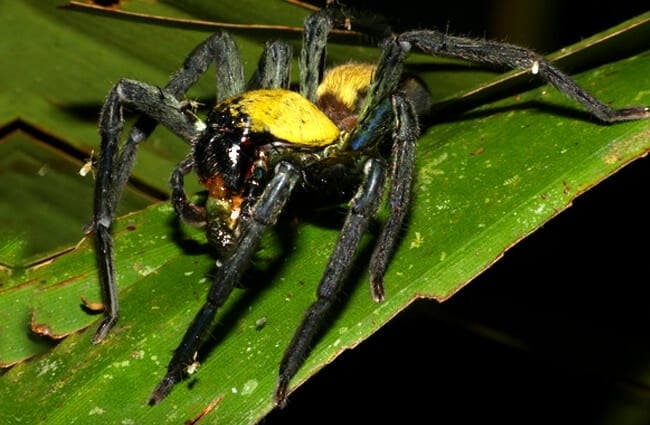
The Dance of Life: Mating and Reproduction
The reproductive cycle of Huntsman Spiders is a fascinating display of instinct and maternal care. The process typically involves:
- Courtship: Male Huntsman Spiders engage in elaborate courtship rituals to attract females. This often involves specific leg tapping patterns and vibrations transmitted through the substrate. The male must carefully approach to avoid being mistaken for prey.
- Mating: Once the female accepts the male, mating occurs. The male uses his pedipalps to transfer sperm to the female’s epigyne.
- Egg Sac Construction: After mating, the female constructs a flattened, disc-shaped egg sac, usually white or cream-colored, made of silk. This sac can contain anywhere from 50 to 200 eggs, depending on the species.
- Maternal Care: One of the most endearing aspects of Huntsman Spider reproduction is the female’s dedicated maternal care. She guards her egg sac fiercely, often holding it beneath her body or attaching it to a surface and standing guard. She will not eat during this period and will aggressively defend her precious cargo from predators.
- Hatching: After several weeks, the spiderlings hatch inside the sac. The mother then tears open the sac to allow her offspring to emerge.
- Dispersal: The tiny spiderlings remain near their mother for a short period before dispersing to lead independent lives. Huntsman Spiders typically have a lifespan of 2 to 3 years in the wild, though some can live longer in captivity.
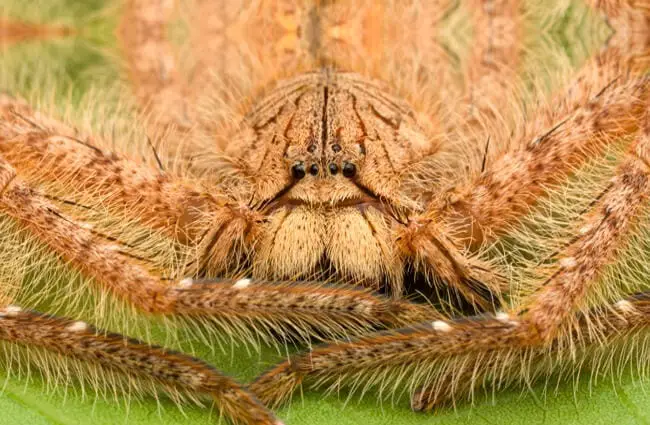
A Glimpse into the Past: Evolutionary History
The Sparassidae family, to which Huntsman Spiders belong, is part of the larger group of araneomorph spiders, which are “true spiders” characterized by their forward-pointing fangs. Their evolutionary lineage stretches back millions of years, with their flattened body shape and cursorial hunting style being key adaptations that have allowed them to thrive in diverse environments. Their ability to move rapidly and squeeze into tight spaces has been a significant evolutionary advantage, enabling them to exploit niches unavailable to many other predators. The diversity within the Sparassidae family, with over a thousand described species, speaks to their long and successful evolutionary journey.
Huntsman Spiders and Us: Interaction and Coexistence
Encountering a Huntsman Spider in the Wild or at Home
For many, the sight of a large Huntsman Spider can be startling, especially if it appears unexpectedly on a wall or in a car. However, understanding their behavior can help alleviate fear and promote safe coexistence.
- Are They Dangerous? Huntsman Spiders are generally not considered dangerous to humans. Their venom is mild, and bites are rare, typically occurring only if the spider feels threatened or is accidentally squeezed. Symptoms usually include localized pain, redness, and swelling. Systemic reactions are extremely uncommon.
- What to Do if You Encounter One (Hiker Scenario):
- Stay Calm: The spider is more scared of you than you are of it.
- Observe from a Distance: Appreciate its natural beauty and behavior without disturbing it.
- Do Not Provoke: Avoid trying to touch, trap, or swat the spider, as this is when a defensive bite might occur.
- Allow it to Pass: If it is on a trail, simply wait for it to move on or carefully walk around it.
- What to Do if You Find One Indoors:
- Gentle Relocation: The best approach is to gently encourage it into a container (like a cup or jar) and release it outdoors, away from the house. Slide a piece of paper or cardboard under the opening to trap it.
- Avoid Harming: Remember, they are beneficial pest controllers.
- Check Your Car: Huntsman Spiders are notorious for appearing in cars, often seeking shelter or warmth. If one appears while driving, pull over safely before attempting to relocate it.

Huntsman Spiders in Human Culture
While not as prominent in folklore or mythology as some other animals, Huntsman Spiders often feature in discussions about Australian wildlife and are frequently the subject of viral videos due to their size and unexpected appearances. They represent a common encounter for people living in their native ranges, often sparking a mix of fear and grudging respect for their pest-controlling abilities. Their presence in homes is a reminder of the close interaction between humans and the natural world in many parts of the globe.
Ecosystem Contributions and Interactions
Huntsman Spiders play a crucial role in their ecosystems:
- Pest Control: As active predators of insects, they help regulate populations of various invertebrates, including those considered pests to agriculture or human health (like cockroaches).
- Food Source: While formidable predators themselves, Huntsman Spiders also serve as a food source for other animals, including birds, lizards, and larger predatory insects. This integration into the food web highlights their importance in maintaining ecological balance.
Fascinating Facts About Huntsman Spiders
Beyond their basic biology, Huntsman Spiders offer a wealth of intriguing details:
- Incredible Speed: They are among the fastest spiders, capable of moving at speeds that make them seem to vanish in an instant.
- Flattened Body: Their unique body shape allows them to hide in incredibly narrow spaces, making them masters of camouflage and evasion.
- Nocturnal Hunters: Most species are active at night, emerging from their hiding spots to hunt.
- Vibrational Communication: Males use complex vibrational signals to communicate with females during courtship.
- Species Diversity: The family Sparassidae includes over 1,200 described species, exhibiting a wide range of sizes, colors, and behaviors.
- Celebrity Names: One notable species, Heteropoda davidbowie, was named in honor of the musician David Bowie, highlighting the unique appearance of some Huntsman Spiders.
- “Running Spiders”: Another common informal name for them, reflecting their primary mode of locomotion and hunting.
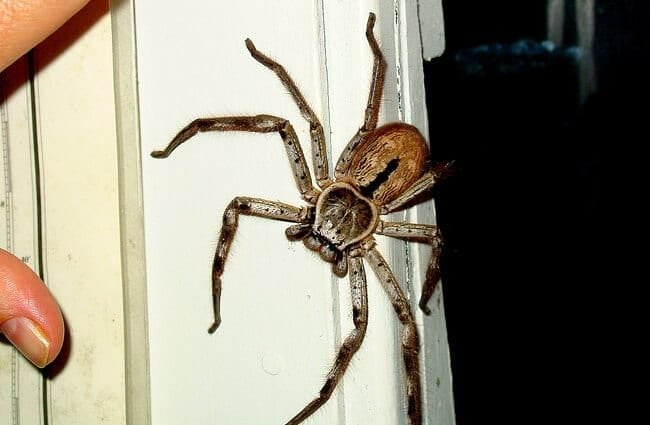
Finding Huntsman Spiders in the Wild: A Guide for Animal Lovers
For those eager to observe these magnificent arachnids in their natural habitat, a few tips can increase your chances:
- Location: Focus on warm, humid environments. Look under loose bark on trees, beneath large rocks, logs, or even under outdoor sheds and furniture.
- Time of Day: Huntsman Spiders are primarily nocturnal, so searching at night with a flashlight can be fruitful. Their eyes may reflect the light, making them easier to spot.
- Patience and Observation: Move slowly and quietly. Look for their flattened bodies pressed against surfaces or peeking out from crevices.
- Respectful Distance: Always maintain a respectful distance. Observe without disturbing their natural behavior. Remember, they are wild animals.
Caring for Huntsman Spiders in Captivity: A Zookeeper’s Guide
For aspiring zoologists or zookeepers tasked with caring for Huntsman Spiders, providing an appropriate environment is key to their health and well-being.
Enclosure Requirements:
- Size: A spacious enclosure is crucial, at least 30x30x30 cm (12x12x12 inches) for an adult, with good ventilation.
- Substrate: A few inches of moisture-retaining substrate like coco fiber, peat moss, or chemical-free topsoil.
- Climbing and Hiding: Provide plenty of vertical surfaces for climbing (bark slabs, cork bark, sturdy branches) and numerous hiding spots (cork rounds, hollow logs, artificial caves). Remember their flattened bodies allow them to squeeze into tight spaces.
- Water: A shallow water dish with clean, fresh water should always be available. Ensure it is shallow enough to prevent drowning, or place pebbles in it.
Environmental Conditions:
- Temperature: Maintain a stable temperature between 22-28°C (72-82°F). Avoid extreme fluctuations.
- Humidity: Moderate to high humidity (60-80%) is generally preferred, achieved by misting the enclosure a few times a week. Ensure good ventilation to prevent mold growth.
Diet:
- Live Prey: Feed appropriate-sized live insects such as crickets, cockroaches, and locusts.
- Frequency: Adults typically eat once or twice a week. Juveniles may eat more frequently.
- Avoid Overfeeding: Remove uneaten prey after 24 hours to prevent stress to the spider and potential injury from the prey.
Handling and Maintenance:
- Avoid Handling: Huntsman Spiders are fast and can be skittish. Handling should be minimized or avoided entirely to prevent stress to the spider and potential defensive bites. Use long forceps or a catch cup for enclosure maintenance.
- Cleaning: Spot clean as needed, removing uneaten prey and waste. A full substrate change may be required every few months.
- Breeding: If attempting to breed, ensure the female is well-fed before introducing a male to reduce the risk of cannibalism. Provide ample space and hiding spots for both.
What to Avoid:
- Direct Sunlight: Never place the enclosure in direct sunlight, which can quickly overheat and kill the spider.
- Pesticides: Keep the enclosure and surrounding area free from any chemical sprays or pesticides.
- Inappropriate Prey: Do not feed wild-caught insects that may carry parasites or pesticides. Avoid prey that is too large or aggressive for the spider.
- Rough Handling: Their exoskeletons are fragile, and falls can be fatal.

Conclusion: Appreciating the Huntsman
From their impressive hunting skills to their dedicated maternal care, Huntsman Spiders are truly captivating creatures. While their size might initially trigger apprehension, a deeper understanding reveals them to be beneficial, mostly harmless, and incredibly adapted members of our planet’s diverse fauna. By learning about their habitats, behaviors, and ecological roles, we can foster a greater appreciation for these often-misunderstood arachnids and ensure their continued place in the natural world.

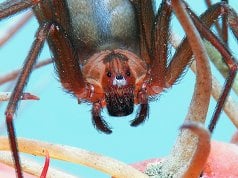
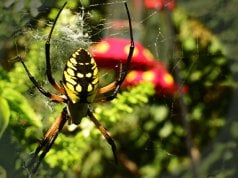



![Red Angus Closeup of a beautiful Red Angus cowPhoto by: U.S. Department of Agriculture [pubic domain]https://creativecommons.org/licenses/by/2.0/](https://animals.net/wp-content/uploads/2020/03/Red-Angus-4-100x75.jpg)

